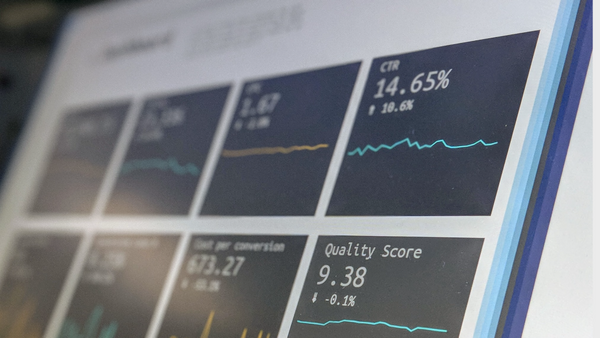6 minute read
12 Amazon Seller Fees Explained in 2019
Every seller on Amazon knows the platform naturally involves fees. Every seller on Amazon knows the platform naturally involves fees. It’s important to understand why and what you’re being charged for. This is how you can master the art of being a seller. In this post, we’ll examine 12 Amazon selling fees every seller needs to know.

1. Amazon Referral Fees
This is the only type of fee you’re 100% guaranteed to pay if you’re selling on the platform. (Sorry!) Amazon referral fees are the fees you pay every time you make a sale on Amazon. They’re based on a percentage of the total price paid by the customer. It’s basically a tax you pay for the privilege of selling on Amazon marketplaces. It’s usually 15%; however, it varies from category to category. In certain cases, Amazon calculates referral fees more dynamically.
The good news about this kind of fee is that you may have some flexibility if you’re able to change the category your item appears in on Amazon. In some cases, choosing a favorable Amazon category for your next product or line of products could help you improve margins almost instantly.
2. Amazon Storage Fees
Amazon storage fees apply only if you’re using Amazon’s FBA service and have your inventory stored at Amazon facilities. The fees are charged by a cubic foot of space your inventory takes up, and Amazon charges fees once a month. The fees per cubic foot also change around the end of the year (holiday season!) when there’s a higher volume of inventory being brought in by Amazon.

There’s also an additional fee of $0.15 per product per month when an item stays in an FBA warehouse longer than a year. Keep these fees in mind when calculating the time of year to launch a product.
3. FBA Fulfillment Fees
FBA fulfillment fees are another type of fee that only affects those using the FBA service. The fees are charged for services such as packaging handling, prepping and shipping. The fees Amazon charges are a fixed amount per product unit. The fees are charged only when an order needs to be fulfilled. The exact amount depends on the size and the weight of a product and it’s divided into categories that correspond to different fee brackets on the Amazon selling platform.
4. Amazon Multi-Channel Fulfillment Fees
The services provided by Amazon FBA are not limited to only fulfilling orders for items sold using the Amazon platform. You can use the service for orders made on other platforms or websites. Amazon will fulfill those orders in exchange for a fee.
Multi-channel fulfillment fees are structured differently and are also based on the size and weight of the product, and there are categories for those as well. The other factor is how quickly you’d like to have your item delivered once it’s sold. Shipping can be from anywhere to the next day to 5 days, the quicker methods being more expensive, of course.
5. Amazon Closing Fees
These fees are only applicable to Media items sold on the platform, such as gaming equipment, cameras. The fee is charged when a sale is made and currently stands at $1.80, it applies to:
- Books, DVD, Music
- Software & Computer/Video Games
- Videos and Video Game Consoles
6. Export Fees
These fees are applicable when you hold your inventory in an FBA warehouse in a certain country, and you need to fulfill an order that will take it across a border. This is applicable only if you’re using Multi-Channel fulfillment and you’re fulfilling an order for a sale that was made off the Amazon platform. The fees are fixed and depend on the location where the items need to be delivered to.
7. Amazon Return Processing Fees
Returns are never a joyous occasion for a seller, to say the least. Any way you can reduce returns will be a boon to the bottom line, but returns will happen. If you do get a return, Amazon will refund you the referral fee but may charge a “refund administration fee.” Then you’ll refund the customer in full. The fees you owe to Amazon once they process the return will be equal to the fulfillment fees you paid on the order in the first place.
8. FBA Inventory Placement Service Fee
In a scenario where you’re not satisfied with where your incoming shipment has been placed (in terms of FBA warehouse location), you can change it for a fee. Why would you voluntarily pay the FBA inventory placement service fee? If you don’t want to lose money by separating your shipment to multiple locations, then it could be cheaper to send them to a single location. Amazon will let you do that, for a fee, of course.

9. Amazon Stock Removal Fees
In the event where some items you have in storage at an Amazon FBA facility become unfulfillable (or you simply want to dispose of them), you can pay Amazon to do the dirty work for you. The fees are charged per unit removed and differ based on the size of the product.
10. Amazon Seller Account Fees
In order to sell on Amazon, you’ll need to have a seller account. This type of Amazon selling fee is inescapable, but you do have control over how much you pay. Depending on your volume, you can choose between 2 types of Amazon seller accounts:
- Individual seller – You pay no monthly subscription fees. But Amazon charges you $0.99 for every item sold on top of any other fees that might apply. This option is best for those beginner Amazon sellers who don’t expect to sell more than 40 items a month.
- Professional seller – This is the subscription almost all professional Amazon sellers use, at least the ones who are serious do! It’s $39.99 a month and gives you access to everything you could possibly sell on Amazon. It doesn’t matter if you sell 50,000 units a month or not even one thing, this one flat fee stays the same.
11. Amazon Coupon Redemption Fees
When you set up a coupon campaign in seller central you can select a budget and the amount off the original selling price of the product you are promoting. The coupon can be for a percentage off or a fixed amount of. You can set up a budget and duration of the promotion. For each redemption of a coupon Amazon will charge you $0.60 for it.
Just keep that in mind when you’re weighing the pros and cons of running an Amazon coupon campaign, so you can know to calculate your cost-benefit.
12. Amazon Dangerous Goods General Fees
Some items that might be sold on Amazon, as well as stored in an FBA facility, are now being labeled as dangerous after a review process. This dangerous goods fee is new to Amazon in 2019. The reasoning here is that because these dangerous goods require special care from Amazon, they’re also subject to higher fees.
Those fees can be fulfillment and storage fees (mandatory if you’re using FBA). Additional costs Amazon charges for dangerous goods can also include removal processing fees and disposal fees.
Now that you understand all of these fees, you know how to take them into account when setting up your business model. Happy selling! Learn more about how to set up a free global currency account for your international Amazon sales.










